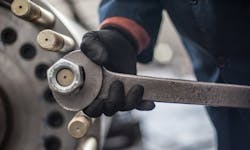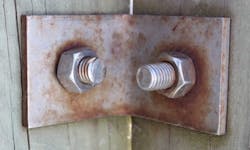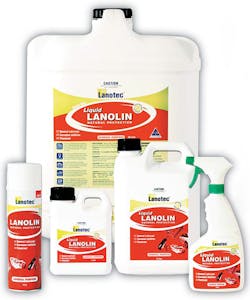Last Updated: 16/2/24 at 8:58am
Contamination of Stainless Steel occurs when the stainless comes into contact with an iron object, for example a tool. As a result the iron particles are ‘smeared’ onto the stainless. When put in a corrosive environment (think most cities on the coast) these iron particles rust, leaving a very unsightly brown rust. Contamination isn’t often apparent until after the installers have left the site, but sooner or later the invisible iron particles will probably rust.

This can not only not look good and harm the reputation of the installer, but require them to return to the site to remedy the problem.
To help you avoid this headache, we would like to share some tips gleamed from our 20 years of experience:



Next month we will be discussing how to clean surface contamination.
For more information on how best to avoid contamination of stainless. Visit the following links:
NB: This information is provided as a guide only and Anzor does not accept liability for the application of this information. For advice about stainless steel contact the Nickel Institute
Are you sick of cutting your bolts down?
How to install Stainless Down Pipe Brackets
Calculate the corrosion resistance of your stainless steel with our PREN calculator
To receive useful info and product updates add your details below

Request a hardcopy of our product wall chart or download a PDF.

Download a PDF of our paper based catalogue.